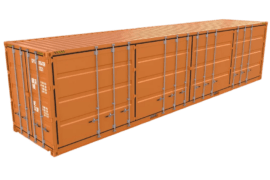A promotional budget, sound advertising strategies, and professional photography are essential. But if the content on a website or blog is boring and doesn’t address their audience’s interests, everything else is irrelevant. Users will come to the page, but they won’t stay for long.
Let’s figure out how to create content that will be interesting to the audience and solve the site’s problems.
What is quality content?
Quality content is well-structured, valuable, and interesting for the user material: text, video, images, infographics, animations, etc.
The main characteristics of quality content:
- There is a purpose – depending on the drive, content can be entertaining, educational, selling, engaging, etc.;
- Simple presentation – go into the essence of quality content and understand at least in general terms its meaning can even a schoolboy;
- Relevance – talk about what your users are concerned about or what can help them in life;
- Uniqueness – you create the quality material by yourself, don’t copy anyone else’s text or images;
- Informative – you must always understand what your content gives to users, whether there is valuable information in it;
- Credibility – to create quality material, rely on reliable information sources, don’t makeup facts.
- Below we describe the recommendations to help you understand how to create exciting content.
1. Define your target audience
The target audience is the people who might be interested in your publications. Here’s how you can determine which users will be representative of your target audience:
- Research your competitors. Look at sites and social media accounts similar to yours: they have about the same number of followers and are working in the same direction as you. Look at what people write under the posts what images and photos they like the most. Analyze the active users on your competitors’ pages.
- Research your existing customers. This option is suitable if you are already working offline. Remember what your customers want, what they like, and what – not so much. Remember what age group buys from you more often, where these people live, what they are interested in when they talk to you about the product.
- Explore forums and social networking groups. See what topics generate the most comments, what people write in their posts, what questions they ask.
Once you’ve collected the data, divide your target audience into segments. Divide people into groups based on age, gender, geographic location, education, behavioral characteristics, personality traits, and interests.
2. Develop a content plan
A content plan is a timed plan of topics. You need it to create content regularly, so you don’t make finding a topic for a post or article a problem.
- Make a long-term content plan. Set aside a day when you devote 2-3 hours to this work.
- Keep your target audience in mind—alternate posts for different segments.
- Do not be afraid of repetition. If you talked about something a year ago, you could repeat the topic but look at it differently.
- Keep a separate content plan for each social network. Different audiences are on various social networks. Topics may be similar, but formats will have to change.
3. Come up with an engaging headline
A clickable headline attracts attention and influences traffic. It helps the reader quickly determine whether he needs the text, why he should spend time on it, what benefits will come from your content. Search engines will show your publications to interested users if it has keywords – words that people often enter in the search bar. The headlines of educational companies are a prime example of this. For example, “essay writer free online” appeals to potential customers since it clarifies the ease with which information may be obtained.
4. Come up with a unique theme
A unique topic is one that no one has ever posted on before. It seems impossible, and there are no unique topics on the Internet. But it’s not. Here are a few ways to come up with special topics:
- Look at what’s already out there online. Especially keep an eye on trends – current ideas in your field.
- Look for info trends. It is news you can cover from your perspective.
- Be repulsed by the issue. Talk about how you see the problem and its solution.
5. Solve the reader’s problem
Research your audience’s needs, look for problems, and offer solutions. You can do this in these ways:
Make instructions – relevant if the solution can be presented in several steps. The instruction can be presented as text, a video, or a diagram.
6. Think through emotional involvement for the reader
Emotional involvement creates interest, an atmosphere of community, or belonging to something meaningful. It’s this feeling that underlies the appeal of spectacles and sporting events.
It is crucial to understand for whom it was created to evoke emotion with content. We are talking about a particular segment of the target audience: students are interested in viewing memes, people with an active lifestyle – to read materials on sensitive topics, women of older age are likely to be carried away by heartwarming stories.
7. Maintain a consistent style of presentation
You may often notice a company or media personality has its style. Some communicate with readers relaxed, friendly, while others have a more formal dialogue. A common style should be followed in all the content you publish: on your website, social networks, and messengers.
It is necessary because your website blog gathers an audience that suits your presentation style. These people like it, so they read you and watch you. If you jump from one type to another, readers will get confused, and engagement will decrease.
8. Think about visual design
Visual design is all the visual information accompanying the text: videos, photos, illustrations, charts, graphs, gif-animation.
- If you write an article, do not make them boring sheets. Use subheadings, lists, and tables. Reinforce the text with pictures, photos, or tables.
- If you’re shooting stills, use a different pitch—alternate video and photos, “talking heads,” and slides with text. Add polls, quizzes, and music to the posts to liven up the content.
- If you record a video for your YouTube channel, don’t forget the preview, a brief retelling of the content. Use different formats: live footage, screen recordings, infographics and animations, presentations. Alternate these elements to make your video dynamic.






